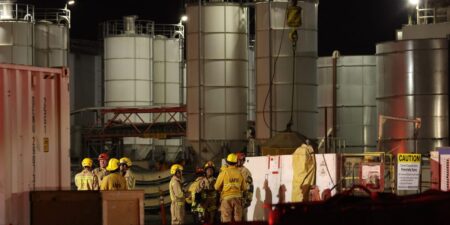Modern battlefields change quickly, and the trick to making sure weapons and capabilities keep pace with new threats and challenges is to put companies on the front lines with troops, a Defense Department official said Tuesday.
It’s a “Silicon Valley” type of model, the DoD official said.
US military officials, acquisition team members, and leaders in Washington have long been discussing the need for rapid iteration for future fights, pointing to examples from the war in Ukraine, where an underdog nation on defense built an arsenal on a shoestring warfighting budget and held its own in the tech arms race against the larger invading Russian force.
Lessons from this conflict have shown just how quickly some weapons, like different types of drones, are entering the battle and then being thwarted by electronic warfare like signal jamming and other countermeasures.
When they run into a problem, the soldiers can relay their concerns and experiences to industry partners, which must react quickly to introduce new solutions. Sometimes, the cycle takes only a matter of weeks.
At a Hudson Institute event on building weapons that can be adapted at scale, Defense Innovation Unit Program Manager Trent Emeneker said uncrewed systems had changed warfare like nothing since the introduction of the machine gun during World War I and that the war in Ukraine is showing constant iterative adaptation in both technology and tactics.
What’s the trick? Emeneker suggested a rather untraditional government contracting approach with more trust in the defense industry and constant, close work on adapting systems.
“What we see is the model that works is companies and their engineering teams are embedded directly with the warfighter, on the front lines, at operations, in combat,” he explained. “They take that learned feedback, and they send it back, overnight, to the larger engineering team.”
Then, the solution is brought back to the warfighter. It’s not going to be perfect, Emeneker said, but it’s going to be better. And if not, they try again until they get it right.
“It’s the Silicon Valley model of software development: go fast, release, update, and improve,” he said.
That is a shift in traditional thinking and how defense contractors have worked with the US military on weapons programs in the past. It would be a move away from years of testing complex, exquisite weapons systems before getting them into the hands of troops. There are efforts like that in the US military, but it’s not militarywide.
A lot of smaller, newer defense companies are embracing these concepts, especially in the uncrewed systems and artificial intelligence spaces. US military and defense industry leaders recognize that for potential future wars against peer adversaries like China, cheap, easily made weapons will be needed. Some companies have told Business Insider the work with soldiers has provided a constant stream of feedback for adapting systems.
This type of acquisition and development process is one that is becoming increasingly popular within special operations forces.
At the Hudson Institute event, some panelists discussed how this approach could give the US an advantage in a future war with China, which has undergone a massive transformation of its military resources, technologies, and capabilities in recent years.
Adapting systems and capabilities to the needs of the US military quickly in a conflict situation depends on the private sector. “Silicon Valley is our secret weapon,” Emeneker said.
Read the full article here















